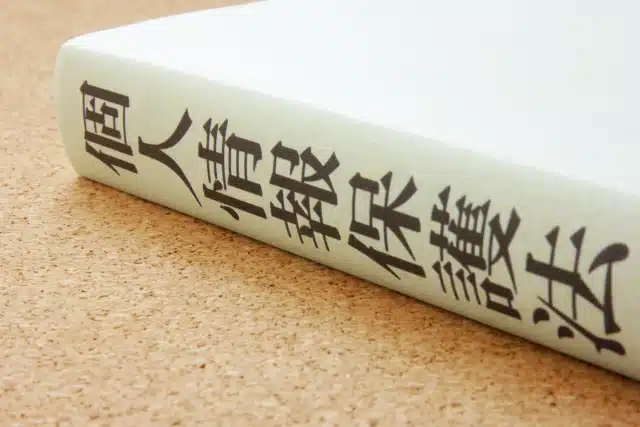Options for M&A Structure in Smartphone App Acquisitions

Every business owner has likely considered the idea of “acquiring” some aspect of another company’s business. The term “acquisition” may sound grand, but it applies equally to situations such as purchasing a smartphone app, a website, a YouTube or Instagram account, or a virtual YouTuber personality. Wanting to buy a website with high page views that could be monetized if operated by your own company is also a form of “acquisition” or “M&A”.
While the everyday terms “acquisition” and “M&A” (Mergers and Acquisitions) are commonly used, they don’t have a single, legal definition in Japan. This is because there are various methods or “structures” for executing an acquisition or M&A. The appropriate structure to choose depends on various specific circumstances, such as whether the other party is a company or an individual, whether the company has other businesses, and what kind of consideration is available.
In this article, we will assume a scenario where Company A owns a smartphone app business B, and Company C wants to buy it. We will introduce the details of the structures that Company A and Company C can take, along with their advantages and disadvantages. Although we use the example of a “smartphone app”, the same applies to websites, YouTube accounts, and other cases.
How to Acquire an App Business
Full Share Transfer
If the target company A, which operates the app B, is not conducting any other business, company C has the option to acquire all shares of company A. In other words, instead of “buying B”, you are “buying the company A that operates B”. By transferring all shares of company A, the transferee, company C, can control company A as a 100% shareholder, and thus control B, the only business of company A.
To carry out a full share transfer, a share transfer agreement is concluded between all shareholders of company A and company C.
Once the share transfer is completed, company A becomes a company with only company C as a shareholder. This is what is known as a “wholly owned subsidiary”.
Merger
A merger is a type of “merger” between companies, where one of the parties to the merger survives after the merger and inherits all rights and obligations from the other party that disappears as a result of the merger. …It may seem a bit complicated, but there are two types of mergers: a “merger by absorption” where companies A and C merge and only company C (or A) remains, and a “merger by incorporation” where companies A and C merge into a new company, say D. Both are methods of “M&A” in the narrow sense.
Company C will comprehensively inherit all the rights and obligations of company A, which will disappear as a result of the merger by absorption. Therefore, after the merger, company C can exclusively conduct the business, including the smartphone app B, that company A had.
To carry out a merger by absorption, company C concludes a merger agreement with company A and, in principle, obtains approval by a special resolution of the shareholders’ meeting (approval by two-thirds or more of the voting rights of the attending shareholders) at each company.
A merger, like the full share transfer mentioned above, has the same tax and accounting effects. For example, if company C is profitable and absorbs a loss-making company A, the post-merger company C will see its profits reduced by offsetting the profits and losses, and the amount of tax will also decrease. If a full share transfer is carried out and company C makes company A a wholly owned subsidiary, companies C and A are “consolidated”, so if company C is profitable and company A is loss-making, the profits and losses will be offset in the same way, reducing the profits and the amount of tax. The difference is whether the companies are “consolidated while remaining separate (full share transfer)” or “naturally offset because the companies themselves become one (merger by absorption)”.
Share Exchange
A share exchange is where a certain joint-stock company (the company to be acquired) has all of its issued shares acquired by another company (the acquiring company). In other words, the acquiring company, i.e., company C, acquires the shares of company A, not in cash, but in exchange for its own (company C’s) shares.
If company C conducts a share exchange for company A’s shares, it can become the sole parent company of company A. And, just like in the case of a full share transfer, it can control the business including the smartphone app B that company A has.
To carry out a share exchange, company C concludes a share exchange agreement with company A and, in principle, obtains approval by a special resolution of the shareholders’ meeting at each company.
Business Transfer
A business transfer is when a company transfers its “business” to another person or company as a transaction.
“Business” refers to assets that are organized for a certain business purpose and function as an organic whole, and the transferee company is required to take over the business activities. A smartphone app is a property in the form of software, and the transferee company operates using the know-how of the transferor company, so the transfer of the app is considered a “business transfer”.
To transfer all or a significant part of a business, the transferee company C will conclude a business transfer agreement with company A. To do this, the transferor company A, in principle, needs to obtain approval by a special resolution of the shareholders’ meeting. It may be a bit confusing, but a business transfer is simply a contract between companies A and C to “sell the smartphone app B for money”, a kind of sales contract. And if the object of sale is not the smartphone app B but a mere object, such as a single computer, this is truly a simple sales contract and does not involve a “shareholders’ meeting resolution”. A business transfer is an exception to this. If company A sells the smartphone app B, a property that is “organized for a certain business purpose and functions as an organic whole” and is important to company A, to another company in its entirety, company A should go through a shareholders’ meeting resolution to carry out such an important “sales contract”, i.e., a business transfer, according to the legal design. Not only the necessity of a shareholders’ meeting resolution, but there are also several rules for business transfers that are different from simple sales contracts, but we will omit the details here.
Pros and Cons of Each Method
Complete Share Transfer
A complete share transfer is a simple method that allows you to control a business by merely transferring the status of a shareholder. However, whether or not to sell the shares is at the discretion of each shareholder of Company A. Therefore, it is difficult to realize if there are shareholders who oppose on the side of Company A. Also, concluding a share transfer agreement with all shareholders is complicated if there are many shareholders on the side of Company A. In addition, it is often necessary to pay money as consideration, and Company C needs to prepare a lump sum of money. However, even if there are opposing shareholders, Company C cannot become a 100% shareholder, but if the number of shares held by the opposing shareholders is small, it is also possible to make decisions as desired in the general meeting of shareholders regarding business management.
Merger
Even if there are opposing shareholders in a merger, if approval is obtained by a special resolution of the general meeting of shareholders, it is possible to completely acquire another company, and the contract can be concluded between each company. In other words, a special resolution of the general meeting of shareholders is possible if there is approval from two-thirds of the total shareholders, so even if a minority shareholder opposes, it is possible to merge against the will of that shareholder. In addition, a merger is a method in which Company C completely absorbs the entire Company A, and for Company C, it is a structure with a “potential risk regarding parts other than the smartphone app B of Company A”. For example, Company C may be conducting other businesses in addition to the business related to the smartphone app B, and may have a huge amount of off-balance sheet debt (debt not listed on the balance sheet). A merger is a structure that completely absorbs “the entire company A itself”, including such off-balance sheet debt. Before implementation, it is necessary to carefully verify whether there is such a risk.
Stock Exchange
Even if there are opposing shareholders in a stock exchange, if approval is obtained by a special resolution of the general meeting of shareholders, it is possible to completely acquire another company, and the contract can be concluded between each company.
Also, there is no legal limit on the consideration for shareholders who become wholly owned subsidiaries, and it can be money or other property, so it is not always necessary to prepare money, and you can give the parent company’s shares. A stock exchange is a structure in which Company C makes Company A a wholly owned subsidiary, and in that sense it is similar to a complete share transfer. In the case of a complete share transfer, the principle is that the shareholder composition of Company C does not change regardless of the transfer, but in the case of a stock exchange where Company C shares are used as consideration, the shareholders of Company C after the stock exchange will include those who were originally shareholders of Company A. Therefore, from the perspective of Company C, the freedom of business management is narrowed.
Business Transfer
A business transfer does not inherit all rights and obligations like a merger, but is a transaction in which the transferor transfers the property, rights and obligations it has for the business to the other party, and the other party takes over the obligations. And, the subject matter is not vaguely determined as “everything related to this business”, but is specifically listed as “a set listed in the appendix”.
Therefore, you will not inherit off-balance sheet debt or unnecessary businesses.
However, in the business transfer of the app, not only the source code of the app and its copyright, but also the server-side application and its copyright, the right to use third-party services, etc., it may be difficult to extract the transferred property necessary for the business unless you understand the app and other software.
Also, Company A cannot freely “transfer” the obligations it bears to Company C, and needs to obtain individual consent from the right holder, who is the other party of the obligation. “Obligation” is abstract, but for example, if the smartphone app B has a user registration function and the operator, Company A, has an obligation to provide some service to each user through the smartphone app B, in principle, Company A needs to negotiate individually with each user and obtain consent, saying, “The operator will change to Company C, and the service will be provided by Company C in the future. Is that okay?” This procedure is very complicated and almost impossible in practice, so Company A needs to create terms of use etc. in advance, foreseeing that there may be a future business transfer, and agreeing to do so in such a case.
The consideration for the business transfer is usually money, and you need to prepare a lump sum of money.
Summary: There are Both Advantages and Disadvantages for M&A Structure in Smartphone App Acquisitions
As stated above, the M&A structure of ‘acquiring’ businesses such as smartphone apps has its own advantages and disadvantages. To smoothly implement this, not only general legal and business knowledge is required, but also specialized knowledge related to specific businesses such as smartphone apps, websites, and YouTube, etc. is necessary.
Category: General Corporate
Tag: General CorporateM&A





















